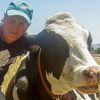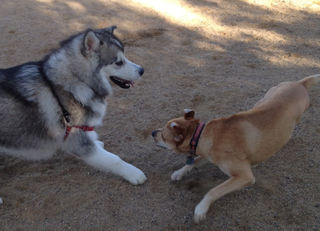Getting things right in the name of science
Over the past week a large number of people have sent me information about two recent essays, one called "The World Is Full of Dogs Without Collars" and the other titled "Man's Pest Friend." Both are concerned with a new book by Ray Coppinger and Lorna Coppinger called What Is a Dog?, not Who is a dog. The use of the word "what" is consistent with their reductionist view of dogs as being relatively unfeeling and unthinking animals. Some of the emails I received also had questions about some other claims including the authors' comparisons between dogs and wolves.
Comparisons between dogs and wolves: We need facts not beliefs
Some comments about play behavior: Here I simply want to briefly comment on some of these comparisons "in the name of science," -- what we really know -- because there's plenty of scientific data available and it's essential to get things right, especially for readers who are seeking knowledge. In an earlier essay called "How and Why Dogs Play Revisited: Who's Confused?" I wrote about a book called How Dogs Work by Raymond Coppinger and Mark Feinstein and expressed my deep concern about some claims made about play behavior by dogs and comparisons between dogs and wolves. It's extremely clear to others and to me that Coppinger and Feinstein's coverage of play is strongly misguided -- copious amounts of data are ignored and stories and unpublished student projects are offered instead -- and what they write does not represent what we really know from detailed scientific research. Indeed, in one instance, when writing about comparisons in behavioral variability between young dogs and young wolves, they present as facts a discussion that is the exact opposite of what my students and I discovered, and they cite the essay in which we present these data. This is indeed rather confusing and disturbing. It also is most unfortunate for naive readers, especially since they will be misinformed by their coverage because dogs and wolves are so misrepresented.
Dogs, wolves, and starvation
In "Man's Pest Friend" we read, "Most feral dogs starve to death, but then, according to our authors [Coppinger and Coppinger] most wolves starve to death as well." This didn't jibe with what I know about wolves, so I asked one of the world's leading wolf experts about this and he wrote, "No this is not true -- in human landscapes they die due to humans -- in natural landscapes other wolves." Here is another belief expressed as if it's a fact. There also are problems with the Coppingers' take on the origin and domestication of dogs. Many of these are dealt with in Janice Koler-Matznick's forthcoming Dawn of the Dog, in Pat Shipman's The Invaders, and a in number of essays by Psychology Today writer Mark Derr.
Where did all the dogs go?
I also continue to receive emails asking if I knew what happened to the 1000's of sled dogs for whom Dr. Coppinger was responsible. On page 25 of How dogs Work we're told, "Some four thousand dogs 'went through the yard'" when "Ray spent fifteen years breeding and training dogs that pull sleds." I have no idea, but according to people I consulted, this is an incredibly large number of dogs, an average of around 267 a year.
An unfortunate on-going charade: Readers beware
Beliefs don't substitute for facts and data that have been reviewed by peers, and there are plenty of data that are readily available. In a review called "Dogs, dogs, and more dogs: Fact, fiction, or something in between?" of an earlier book by the Coppingers, I wrote, "Throughout the book there's a disturbing lack of reference to numerous highly-regarded experts in this field (though they do cite my own work liberally). Instead the authors depend on people who have done little (or no) empirical work on dogs or wolves and whose work has not been published in peer-reviewed professional journals, the standard by which researchers are accredited... All in all, I found little in Dogs to be startling except for the lack of a clear indication where the line between facts and guesses lay... The book is riddled with wholesale generalizations and relies too much on personal anecdotes and unsupported speculation to win my recommendation. Dog lovers and dogs themselves deserve better. Readers beware is the best advice I can offer."
This trend continues in these two recent books. In his review of How Dogs Work called "Cartesian Canines," Mark Derr notes that it is "confounding and often self-contradictory" and that their discussion of play "misrepresents or ignores the current state of science" (Times Literary Supplement, April 8, 2016).
In the name of good science we simply must represent other animals for whom they are. There is no need to embellish or diminish dogs or other animals. But, of course, it is essential to get things right. And this is something that the above mentioned books do not do in a number of different areas.

